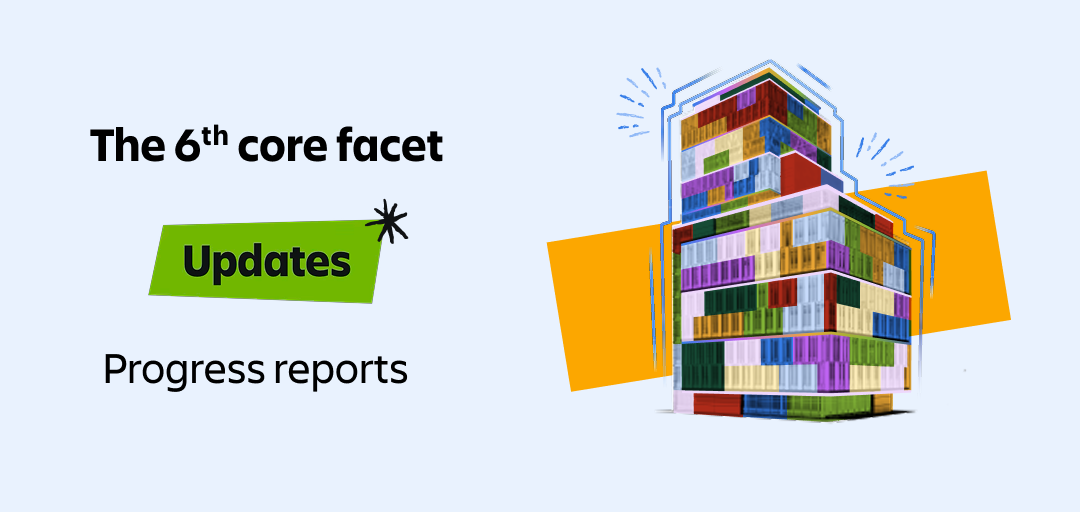How updates support strategic priorities
In today’s discussion, I will explore the concept of updates and status reports in connection with Enterprise Strategy and Planning (ESP) and outline practical steps to ensure alignment. In the initial post of this series, I outlined Atlassian’s perspective on ESP and its six fundamental components. Let’s explore the final connection, highlighting how updates can be the key to achieving organizational goals.
3 in 4 executives say lack of communication interferes with speed and quality
– State of Teams 2025*
Atlassian defines Enterprise Strategy and Planning (ESP) as the process of setting and operationalizing strategy through a lifecycle of Strategy, Planning, Execution, and Evaluation, focusing on six core facets:
Key Belief
It is important to stay connected. Strategic priorities often involve multiple teams, departments, and even external stakeholders. Without a consistent flow of information, these groups can become siloed and lose sight of the bigger picture. Regular updates and progress reports act as a vital bridge, connecting everyone involved and ensuring they remain focused on the common goals.
Sharing regular updates and progress reports plays a crucial role in supporting strategic priorities in several ways:
- Ensures Alignment
- Facilitates Transparency and Accountability
- Enables Data-Driven Decision Making
- Promotes Collaboration and Communication
- Motivates and Engages Stakeholders
- Early Identification of Risks and Issues
Ensures Alignment
Regular updates help keep everyone on the same page and ensure that activities are aligned with the overall strategic goals. By frequently communicating progress, teams can identify any deviations from the plan early on and make necessary adjustments to stay on track. This prevents wasted effort on activities that no longer contribute to the strategic priorities.
Facilitates Transparency and Accountability
Open communication about progress fosters transparency and accountability. When everyone knows what’s happening and who’s responsible for what, it creates a sense of ownership and encourages individuals and teams to deliver on their commitments. Regular updates also provide an opportunity to identify roadblocks and challenges, allowing for timely intervention and support.
Enables Data-Driven Decision Making
Progress reports provide valuable data that can be used to assess the effectiveness of strategies and make informed decisions. By tracking key metrics and performance indicators, organizations can gain insights into what’s working and what’s not, allowing them to adjust their approach as needed and optimize resource allocation.
Promotes Collaboration and Communication
Regular updates create a forum for communication and collaboration between different teams and stakeholders. This helps break down silos and encourages knowledge sharing, which can lead to innovative solutions and improved outcomes. It also allows for feedback and input from different perspectives, which can help refine strategies and improve their effectiveness.
Motivates and Engages Stakeholders
Sharing progress, especially successes, can boost morale and motivate teams to continue working towards the strategic goals. It also keeps stakeholders engaged and informed, building confidence in the organization’s ability to achieve its objectives. This is particularly important for securing continued support and buy-in from stakeholders.
Early Identification of Risks and Issues
Regular reporting allows for the early identification of potential risks and issues that could impact the achievement of strategic priorities. This provides an opportunity to proactively address these challenges and mitigate their impact, preventing them from escalating into larger problems.
In short, regular updates and progress reports provide a vital feedback loop that enables organizations to monitor progress, identify areas for improvement, and ensure that everyone is working together towards achieving the shared strategic priorities.
Best practices for effective reporting
- Establish a Consistent Cadence: Determine a reporting frequency that works for your organization (e.g., weekly, bi-weekly, monthly). Consistency is key to maintaining momentum and ensuring everyone stays informed.
- Keep it Concise and Focused: Avoid overwhelming stakeholders with unnecessary details. Focus on key achievements, challenges, and next steps.
- Use Visuals: Charts, graphs, and other visuals can effectively communicate progress and make data more digestible.
- Encourage Two-Way Communication: Reporting shouldn’t be a one-way street. Encourage feedback, questions, and open discussion to ensure everyone feels heard and involved.
By embracing regular updates and progress reports, organizations can create a dynamic and responsive environment that fosters strategic alignment, drives progress, and ultimately leads to greater success. It’s a simple yet powerful tool that can transform how you work and achieve your goals.
Metrics
Lagging Indicators
- Strategic Priority Update Frequency: Average number of days since the last update of a strategic priority or investment that is in progress.
- Goal Update Frequency: Average number of days since the last update of a goal that is in progress.
- Work Item Update Frequency: Average number of days since the last update of a work item that is in progress.
Leading Indicators
- Ownership Ratio: Percentage of in-progress strategic priorities, goals, or work that have owners designated, relative to the total number of strategic priorities, goals, or work.
- Learn more about ESP and Strategy Collection
- Download the full whitepaper now!
- *State of Teams 2025

